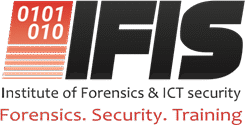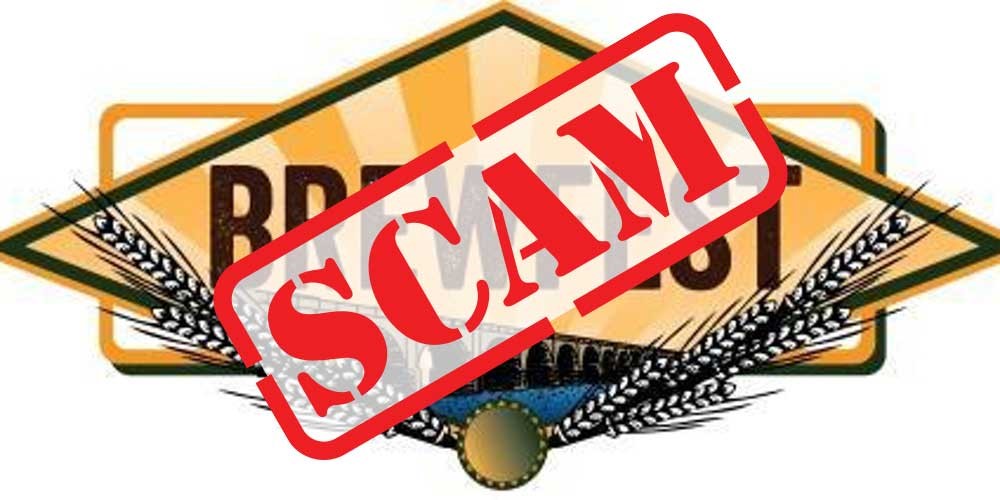Why SACCOs are prime targets.
In March 2025, a rural SACCO in Mbarara lost UGX 64 million. No hacker was involved. No firewall was breached. The loss was purely internal, orchestrated by an insider who approved loans to ghost members and routed funds to mobile wallets owned by associates. When the police cyber unit was called, the investigators found a simple truth: the fraudster never needed to hack the system; he only needed access to a logged-in computer.
Small SACCOs assume they are beneath the radar of cyber criminals. That assumption is their first vulnerability. Fraudsters target them precisely because they are small, where one staff member often handles accounting, teller, and system administration. In such setups, segregation of duties is a dream, not a practice.
The illusion of “low risk” creates a fertile ground for invisible fraud. Members trust managers implicitly, and managers, overstretched by operational chaos, rarely scrutinize logs. The fraudster thrives in this trust gap.
During training, Summit Consulting, in partnership with the Institute of Forensics & ICT Security often simulates this by setting up a dummy SACCO system. When the teller logs in, a remote monitor records the session. The teller steps away, and “Suspect 1” walks in, authorizes a fake loan, and withdraws funds. No hacking tools. Just an opportunity.
To drive the point home, participants are asked to list three roles in their SACCO that are combined in one person. Most realize, with unease, that one staff member has the keys to the kingdom, from cash handling to system administration.
The chair problem, unattended desktops
A security guard at a SACCO branch once noticed something strange. Every lunchtime, the teller’s computer remained open, with the system logged in. One day, the guard saw a man in a reflective vest, supposedly a maintenance worker, approach the computer, type something quickly, and leave. Later, the SACCO’s system showed that UGX 3 million had been transferred to an account named “Member 112B.” The name didn’t exist in the records.
Unattended desktops are the silent epidemic in SACCOs. Staff assume that physical access is protection enough, “after all, who would dare touch my computer?” Yet, anyone with five minutes and a curious mind can reroute funds, alter records, or delete evidence.
Fraud today doesn’t require coding skills. It requires patience, observation, and a moment of negligence.
As part of Cybersecurity Awareness Month, we made participants watch a live simulation. A staff member logs in and leaves for “a quick errand.” Suspect 1 enters, approves a pending transfer, then logs out. The transaction looks legitimate because it came from a valid session.
Thereafter, each participant is asked to role-play the same scenario in their teams. The lesson is clear: a single unattended session can destroy years of trust.
Ghost members and internal collusion
In 2023, a SACCO in Masaka discovered that 47 “members” in their database were either deceased or non-existent. The records had been created over time by a staff member who recycled data from real ID copies. Loans were processed in the ghosts’ names, approved using colluding officers’ credentials, and withdrawn immediately after disbursement.
This is the classic ghost-member fraud. It thrives in environments where oversight is manual and verification is relaxed. Staff exploit the lack of data validation by using relatives’ national IDs or editing one digit of an existing member’s number.
The collusion extends upward. Supervisors sign off without cross-checking NIN details or confirming that the supposed member ever visited the SACCO. In many rural branches, loan verification calls are “too costly.”
The mobile money trap
In the same Masaka SACCO referred to above, every transaction was confirmed via mobile money. Yet, something didn’t add up. Deposits recorded on the MoMo statement didn’t match the SACCO’s ledger. An agent, working with an internal staff member, had perfected the art of double-posting.
Here’s how it worked: when a member deposited UGX 500,000, the agent processed the transaction twice. One went through the official channel, while the second was entered manually into the SACCO’s system as a “pending update.” The manual entry inflated balances temporarily, giving the illusion of cash availability. When reconciliation was done, it was brushed off as “system delay.”
The fraud continued for months. By the time it was discovered, the SACCO had lost over UGX 40 million.
During training, we usually give participants a printed MoMo statement and a system ledger. They must match entries line by line, an eye-opening task that shows how simple reconciliation could have prevented massive loss.
Loan approval collusion
Every fraud has a timing window. In SACCOs, that window often opens after 5 p.m., when managers leave and systems are “quiet.” That’s when Suspect 1 strikes. Using saved passwords in browser autofill, they log in as the manager, approve a batch of loans, and disburse them before anyone notices.
Loan approval fraud is elegant because it hides behind authority. The system records a valid approval under a legitimate account. The next morning, everything appears normal until funds start disappearing.
The trick thrives because managers are careless with password security. Many still rely on autofill or share credentials “for convenience.” Yet convenience is the first cousin of catastrophe.
While making a cybersecurity presentation to participants are asked to map their SACCO’s loan approval process and highlight every point where one person can act without oversight. The discovery often leads to uncomfortable silence.
The printout manipulation trick
Fraud in SACCOs often hides not in digital systems, but in paper trails. Receipts, those little pieces of printed proof, can be the biggest deception tools.
In a Gulu SACCO, members began to complain that their savings were “missing.” They had receipts showing deposits of UGX 300,000, yet the system reflected UGX 100,000. Upon investigation, Summit found that staff were saving receipts offline as image files, altering the numbers in editing software, and printing them out as genuine receipts.
The audit team never cross-verified printed receipts with system-generated ones. They trusted paper more than data.
To demonstrate the risk, I usually show two receipts, one genuine from the system and another modified using simple editing software. Even experienced auditors struggle to tell which is fake until metadata analysis reveals the tampering.
Ask participants to audit mock receipts. Some are authentic; others are edited. The exercise reinforces one golden rule: if it’s not verified by the system, it doesn’t exist.
The Wi-Fi and USB leak
In an age of cloud computing, SACCOs still rely on flash drives. Data backups are often carried home “for safety.” Yet that is where most data theft begins.
One SACCO’s accountant routinely saved end-of-day reports on a personal USB stick. One day, she lost it in a taxi. Weeks later, the SACCO started receiving strange calls from members who had never applied for loans but were being chased by debt collectors. Their personal details, NINs, phone numbers, and guarantors had been stolen and used to open accounts in another district.
Wi-Fi is another silent culprit. Shared connections, weak passwords, and no rotation policy mean anyone nearby can access sensitive files.
During cybersecurity awareness sessions, Summit’s ethical hacking team demonstrates how plugging a USB copies member records within seconds. They then show how open Wi-Fi allows access to shared folders without a password. The realization is chilling.
Try this: Put participants in groups and task them to design a three-step data handling policy. Typically, they start with a data classification policy and conclude: (1) encrypt backups, (2) ban personal USB use, and (3) rotate Wi-Fi passwords monthly.
The insider–outsider handshake
Every major SACCO fraud has an inside man and an outside hand. Suspect 1 (an insider) provides credentials. Suspect 2 (an outsider) executes the crime remotely, leaving little trace.
In 2024, a SACCO in Fort Portal was breached not through hacking, but through remote access tools. Staff had installed AnyDesk to allow “IT support” from a friend. That friend turned out to be part of the scheme. Using legitimate staff credentials, they logged in at midnight and made transfers disguised as system updates.
The audit trail showed everything as “normal activity.” Only the timing raised suspicion.
To illustrate this point, as part of the cybersecurity awareness, we show a real system log: IP address from an unfamiliar location accessing the SACCO system via TeamViewer at 2:13 a.m. The participants gasp when they realize how easily this could happen in their own offices.
Give each team to analyse a mock log file to identify anomalies, unusual access times, device IDs, or IP addresses. The exercise teaches one vital habit: always review who accessed what, when, and from where.
The auditor’s blind spot
When auditors arrive at SACCOs, staff scramble to print documents, not logs. They present files, vouchers, and registers neatly bound in folders. Yet the real evidence lies in system activity, not paperwork.
Traditional audits focus on documentation compliance: “Is the voucher signed? Is the loan form complete?” Fraudsters know this. They play the paperwork game flawlessly while hiding their footprints in digital trails.
The most dangerous frauds hide not in what is done, but in when and how it is done. Audit trails can reveal loans approved outside office hours, repeated logins from one device under different accounts, or deletion of transaction history. Technology will not save SACCOs. People will.
In most investigations Summit Consulting has conducted, 80% of losses were preventable through basic discipline: locking computers, rotating passwords, auditing logs weekly, and fostering a culture of accountability. Fraud happens when culture decays. When staff believe “no one is watching,” ethics erode faster than data.
The future of SACCO security lies in building cyber hygiene habits. It’s not about buying another firewall; it’s about instilling digital discipline. When everyone treats every workstation as a potential vault, the game changes.
SACCO fraud is not a sophisticated crime. It’s simple negligence weaponized. The fraudster doesn’t need to write code or break firewalls. He just needs your chair, your password, or your indifference.
Many SACCOs stand at a crossroads: digitize with discipline, or digitize with disaster. “In SACCOs, the fraudster doesn’t break in. He simply sits where you sat last”, Mr Strategy.
The message is clear: lock your screen, secure your seat, and never underestimate the power of small acts in preventing big losses.
Copyright IFIS 2025. All rights reserved.
Join us at the 4th Cybersecurity & Risk Management Conference 2025 and be part of Uganda’s frontline defense against the silent digital war.
This year’s theme is “Securing the Future: AI-Driven Cybersecurity and Risk Management”, will bring together regulators, CEOs, auditors, IT leaders, and investigators to uncover the new realities of cyber risk, insider collusion, and AI-powered attacks reshaping our economy.
Date: Thursday, 16th October 2025, starting at 8:00 am.
Venue: Speke Resort, Munyonyo
Don’t wait for the next breach to teach your organization a lesson.
Be in the room where Uganda’s cybersecurity future is being defined.
Register now at https://event.forensicsinstitute.org.
Seats are limited; secure yours today. Email: deborah@forensicsinstitute.org
Happy 63rd Independence Day, Uganda.
As we celebrate 63 years of freedom, let us remember: true independence is not only political: it is digital, economic, and moral. A nation that cannot secure its systems cannot secure its future.
Let this year mark a new chapter, where every institution, every SACCO, every leader, and every citizen treats cybersecurity as the new frontier of freedom. Secure your data. Secure your destiny. Secure Uganda





